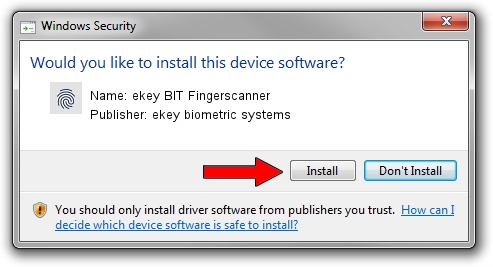Ekey Biometric USB Devices Driver
 -->
-->Ekey Biometric USB Devices Driver
Pick Device Manager. Then go to the Biometric Devices section and expand it with the right click of your mouse. Locate your fingerprint reader. It might be seen as an unidentified device. Right-click the device and update its driver by selecting the appropriate option. We need to be able to have a USB biometric scanner at each remote location that would be recognized by the app running on the server. Hi, We can have local USB devices redirected within the remote desktop session, but regarding whether the device is supported for resources redirection, please refer to the product vendor to confirm. Use the dropdown menus below to find the drivers and downloads you want. You can also search by product or keyword. Lumidigm drivers can be found in the Lumidigm Developer Center. The BIO-key SideSwipe utilizes Windows Biometric Framework (WBF) drivers that are automatically downloaded from Windows Updates after the reader is connected. Users enroll and manage biometric credentials via Windows Hello, within the PC Settings. No additional 3rd party software is required to sign-in to Windows using a fingerprint.
Vendors can provide an INF file to install a WBDI driver.
The following is a list of guidelines for biometric device installation. The code examples in this topic are taken from the WudfBioUsbSample.inx file of the WudfBioUsbSample:
WBDI drivers should specify a class of 'Biometric.' Set ClassGuid equal to the value that corresponds to GUID_DEVCLASS_BIOMETRIC in Devguid.h:
In your .HW section, provide AddReg directives to specify three sections that contain entries to be added to the registry:
Provide the named sections referred to in the .HW section. The [Biometric_Device_AddReg] section sets values for the biometric device, including the exclusive flag and system wake/device idle. To be recognized by Windows Biometric Framework, UMDF-based WBDI drivers must set the 'Exclusive' value to 1. The first two lines of the [Biometric_Device_AddReg] section specify access control list (ACL) rights so that the device can only be opened by an administrator or the local system account. When you specify these ACL rights, third-party applications cannot open the device and capture fingerprint data when the WinBio service is not running. For example:
A WBDI driver that exposes functionality to a legacy (non-WBDI) biometric stack should set the Exclusive value to zero. If this value is set to zero, the Windows Biometric Framework does not attempt to control the device and the device is not exposed through WBF.
Vendors can have a single driver binary that can work with legacy stacks and WBF, but the two cannot operate simultaneously. WBF will only operate if the device can be opened with exclusive access.
The second named section contains registry values for the plug-in adapters. The sample uses the Microsoft-provided sensor adapter and storage adapter. This section also enables Windows log-in support by setting the SystemSensor value:
Finally, the third section sets the following registry values for the database service. The identifying GUID must be unique for each vendor database of a certain format. For instance, in this code example from the sample, change 6E9D4C5A-55B4-4c52-90B7-DDDC75CA4D50 to your own unique GUID in your INF file.
To differentiate WBDI and legacy drivers, vendors must set a Feature Score for the driver in the INX file. Feature Score is not set in the WudfBioUsbSample sample. For more information about setting a Feature Score, see Ranking a Biometric Driver on Windows Update.
For information about INX files and how they differ from INF files, see Using INX Files to Create INF Files.
In order to replace a WBDI driver with a legacy driver, use the following procedure:
Ekey Biometric Usb Devices Driver Download
Close all currently active WBF applications.
Uninstall the WBDI driver.
Stop the WBF service, restart it, and then stop it again.
Install the legacy driver.

This topic describes the Microsoft-provided driver framework for USB devices that do not have their own USB device class specification.
Microsoft provides a driver framework for some types of USB devices that do not have their own USB device class specification. Vendors who want to develop these types of devices should develop a device driver that uses the specified framework for the device type.
Currently Microsoft provides the following driver frameworks for the following USB devices:
USB biometric devices
Microsoft supports USB biometric devices (fingerprint readers) by providing the Windows Biometric Framework. For more information see Biometric Framework overview.
Related topics

